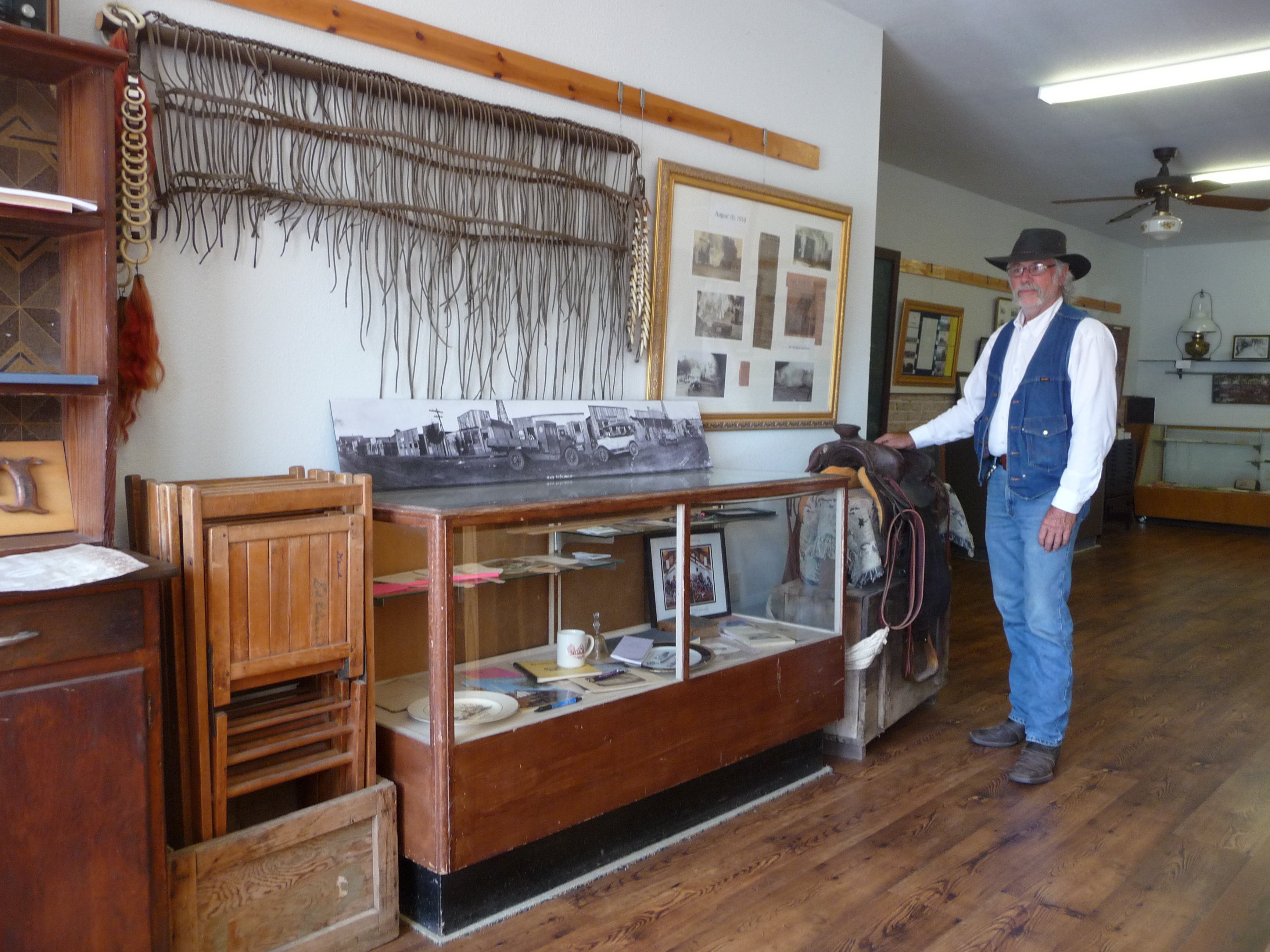WHITEWATER – The Whitewater Photo Museum offers a glimpse into this town’s past, and not just through a camera lens.
Here’s a stained glass window from the first church in Whitewater. There are cloth sacks, photos, rulers and pencils from the Whitewater Mill, which closed in the 1980s. Of course, there are plenty of photos, like those taken between 1890 and 1910 of the houses built by the seven Neiman brothers (along with images of the same homes taken in 2011). One brother, George, built his house on the 160 acres where Whitewater was later platted.
Darryl Claassen opened the museum in 2011, in a downtown building he owns that dates to 1918.
His first large group of Whitewater photos, most from prior to 1950, came from the collection of former funeral home owner Bob Lamb. More donations followed while other photos were lent to be scanned. Claassen now has 1,500 digitized images of Whitewater.
Then people asked if he would display items with advertising on them from local businesses. “The early (family) names in the area really took an interest in the museum.”
Claassen said the museum had its start in his childhood growing up on a farmfive miles east of Whitewater. “I have always been a collector. It could be turtle shells or you name it.” His great uncle was Charles Kauffman, founder of the Kauffman Museum inNorth Newton. “Many Sunday afternoons, we would go to the museum and get a private tour. We could tour behind-the-scenes areas, and Uncle Carl told us stories.” Claassen, 67, farmed several yearsand then owneda livestock equipment manufacturing business in Whitewater.He has been town fire chief since 2003 and has also written several books on the area’s history, which are sold in the museum.
Behind the museum is a
15 by 20-foot cement structure that once served as Whitewater’s jail, which is also available to tour. “I describe it as a unique structure, and it is unique for a town this size to have a jail,” he said.
Claassenrepaired and sealed the roof, replaced windows and repaired the two cell doors. The only original furnishing is one cot; Claassen used its measurements to build a second. “It was built the way the first one was, with hot rivets and blacksmithing,” he said. Period furnishings such as a wood stove, desk, chairs and cookware were brought in.
So far, he has found only a few newspaper stories and legal documents with clues to the jail’s history. Claassen scraped off the roof’s cracked, loose cement and found the date of 1911. He learned the jail was used until 1947 or 1948. It had no plumbing and was never wired for electricity. “It was meant to be a deterrent, not a place to call home.”
Museum visitors also may view 25 walk-behind tractors from Claassen’s collection. He started with a 1948 model made for Sears and two implements that his grandfather Ed Claassen used on his farm a mile south of Whitewater. Walk-behind tractors were introduced in the second decade of the 20th century, but production did not accelerate until after World War II.
Many were used on gardens and truck farms since the self-propelled tractors were built for tilling smaller land areas. “It is an interesting and relatively small period of time that these were used. The purpose was to replace the horse as technology was going through changes,” Claassen said.
Contact Nancy Carver Singleton at
ncsingleton@att.net










